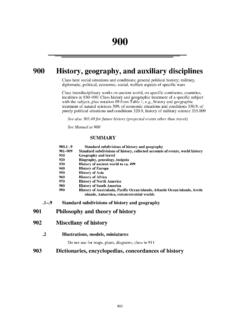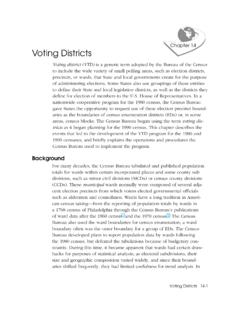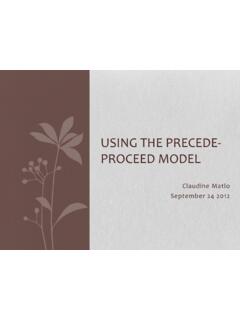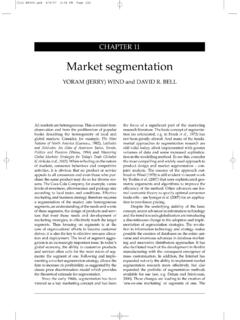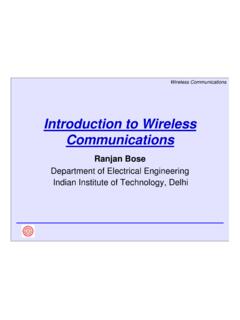Transcription of Philippines: The Role of Language and Education in ...
1 Philippines: The Role of Language and Education in Globalization Consuelo Quijano University of San Francisco December 15, 2012 ABSTRACT International Education has never been discussed in-depth by many citizens of the Philippines. International Education refers to a study abroad program or an approach to prepare students to function in a global society. Perhaps, the focus of discussion is more on primary, secondary, and tertiary Education . In any level of Education , Language has a vital role in the curriculum. It is also imperative to understand the history of Philippine Education . The Philippines was colonized by the Spaniards for more than three centuries.
2 Free public school system was established during the first decade of American rule. The country underwent changes and these foreign influences have contributed to the schools policies and curriculum. My intent is to identify the strengths and weaknesses of the Education system in the Philippines. Major problems in Education such as quality of Education , students output will also be discussed. Introduction and Context The Philippines is composed of 55 ethnic groups, speaking 171 languages and dialects across the 7,100 islands in the archipelago. Filipino and English are considered official languages, with English as the medium of instruction (ESCAP, 2000).
3 Individuals who made it to college and acquired a degree are looking forward to work not only for a local company but also for international company. Due to globalization, individual perspectives have changed and as well the schools mission. The advent of globalization is compounding the already complicated problem of nation-building in the Philippines. One reason is that globalization has not produced the same benefits for all ethnic and interest groups in Philippine society. If globalization has intensified socioeconomic divisions and conflicts, this is due to the inability of the Philippine state to implement policies preparing the country for global competitiveness (Banlaoi, ).
4 Higher Education institutions are forced to produce professionals for an internationalized economy. There is a need to consider factors related to the readiness to participate and compete in a more globalized higher Education environment, such as the different indicators of quality and efficiency of Philippine higher Education . Mestenhauser (1998) defines international Education as a mega-goal that drives other educational goals, as a scattering of international programs and projects, and as a simple addition of international content courses already in existence. The different modalities of international Education such as student mobility, faculty exchange and development, research collaboration, internationalizing curricula foreign Language study and building international perspectives, and international networks are current practices in various parts of the world.
5 Providing higher Education to enable a very diverse range of individuals to acquire more sophisticated levels of knowledge and skills are needed to be competitive in local and global environment. The viability of the various models of higher Education in the Philippine context is confined with four main themes: efficiency, quality, equity in access, and external context. The following factors are essential in understanding the models of international Education because it would help the system be more attuned and responsive to the pressures and opportunities afforded by globalization: 1. The proliferation of public institutions requires substantial increases in public subsidies for higher Education at the expense of basic Education .
6 2. Public funds available for higher Education are scarce. 3. Most of the new public institutions are actually formerly secondary institutions were upgraded to tertiary institutions tend to provide poor quality of Education . 4. The public institutions also offer the same program as the private institutions. However, the tuition and fees are much cheaper in public institutions than private institutions. 5. Graduate Education in the Philippines is also not large enough to meet the internal needs of the higher educational system for qualified faculty. 6. Problems relate to the geographic location of the institutions, admission requirements of higher Education , cost of Education , and limited financial assistance.
7 7. Absence of a credit market, inadequate information about higher Education options and returns, and governance of higher Education . The onset of international Education in the Philippines and the assessment of higher Education are necessary in order to examine the models being utilized in the country. At the economic level, globalization affects employment; therefore, one of the primary goals of Education is preparation for work. The modalities of international higher Education will determine the strengths or weaknesses of Philippine international Education . What preparations do Philippine colleges and universities and higher Education have in responding to these models of international Education ?
8 The Philippines as a developing country is facing a challenge in dealing with international Education . The rise of globalization gives positive and negative effects in any field such as Education . Each nation would like to be up-to-date with the trend. What are the international factors within the higher educational system? International Education is the process by which Education becomes more broadly applicable to students from all diverse backgrounds and countries (Ebuchi, 1989). If the country has enough number of international schools, the question to be considered is the quality of instruction provided to the students. Institutions that aspire to participate in some form of international Education will have to reckon with international standards of quality and efficiency.
9 Strategic partnerships can be forged between Philippine and foreign institutions to improve the quality of the curricular programs, the qualifications of the faculty members, the nature of the quality assurance systems, and the standards of the educational resources like libraries, laboratories, and other learning materials. In a global society, Language and culture are congruent with each other. It is a crucial part of learning process. Cooper (1989) noted that: Language is the fundamental institution of society, not only because it is the first human institution experienced by the individual, but also because all other institutions are built upon its regulatory To plan Language is to plan society (p.)
10 182). English is used as medium of instruction in the Philippines. Teachers assert that its use in the classroom is important in helping foreign students engage better in the learning process. Learning English is one of the common trends where individuals prefer to study abroad either due to affordability and/or quality. Since English is also an official Language in the Philippines, citizens from neighbor countries like Korea go to the Philippines to study English. It is costly to study in their home country; therefore, they opt to study somewhere else. International schools have English programs which serve as bridge programs before the non-English foreign student joins the regular programs.










